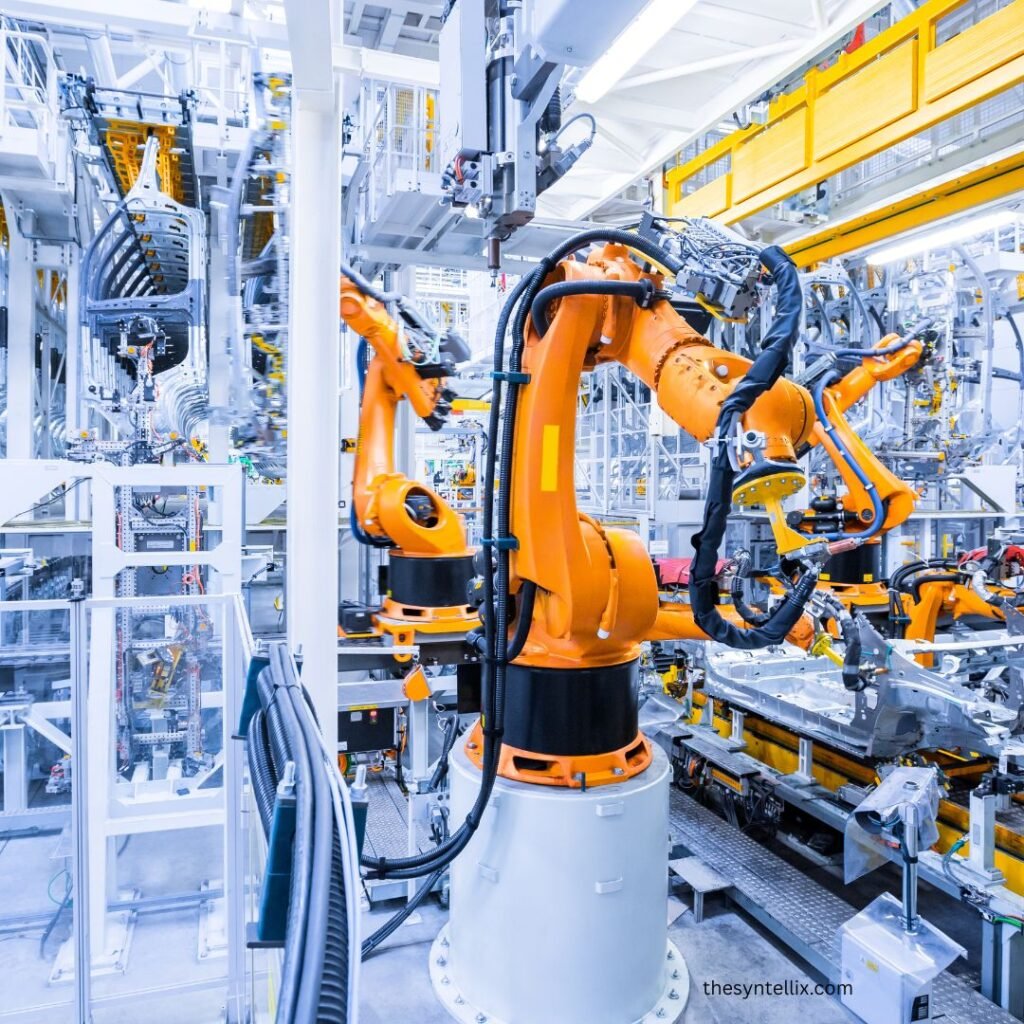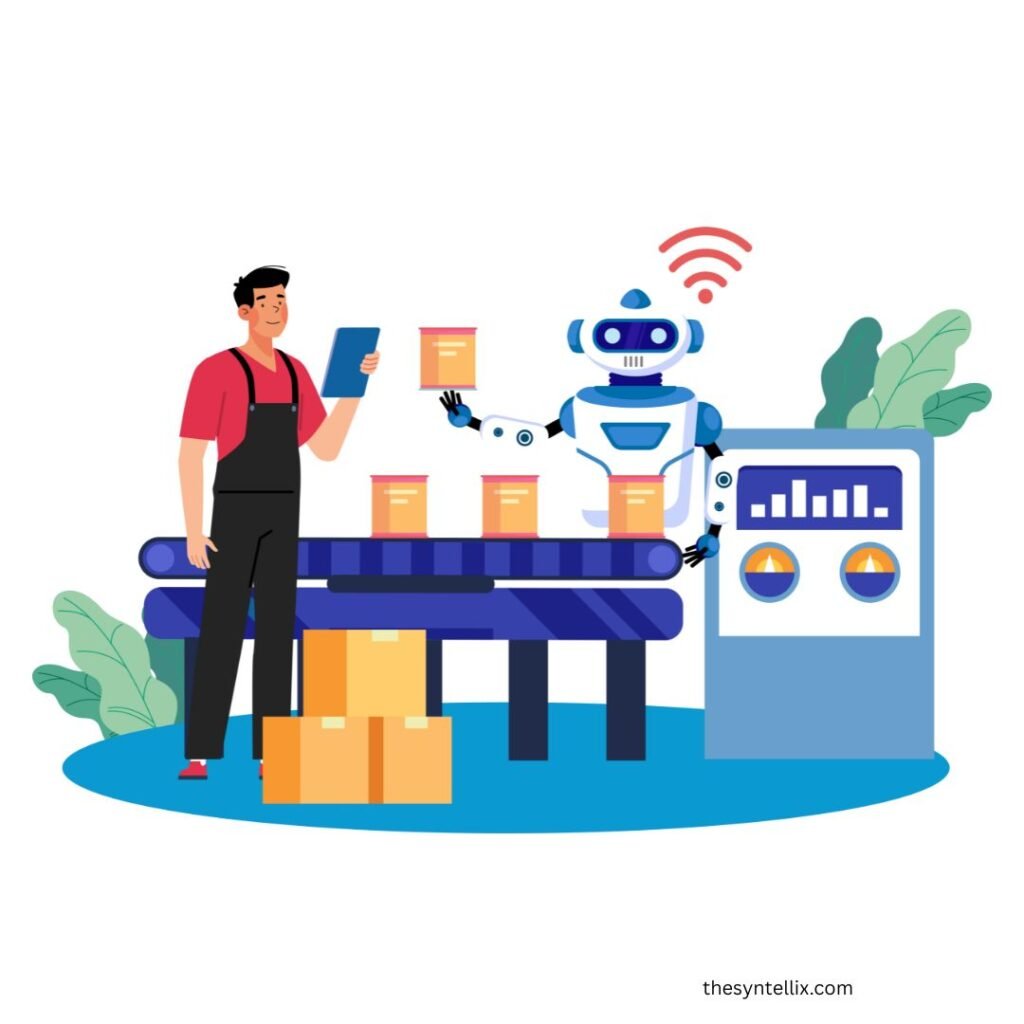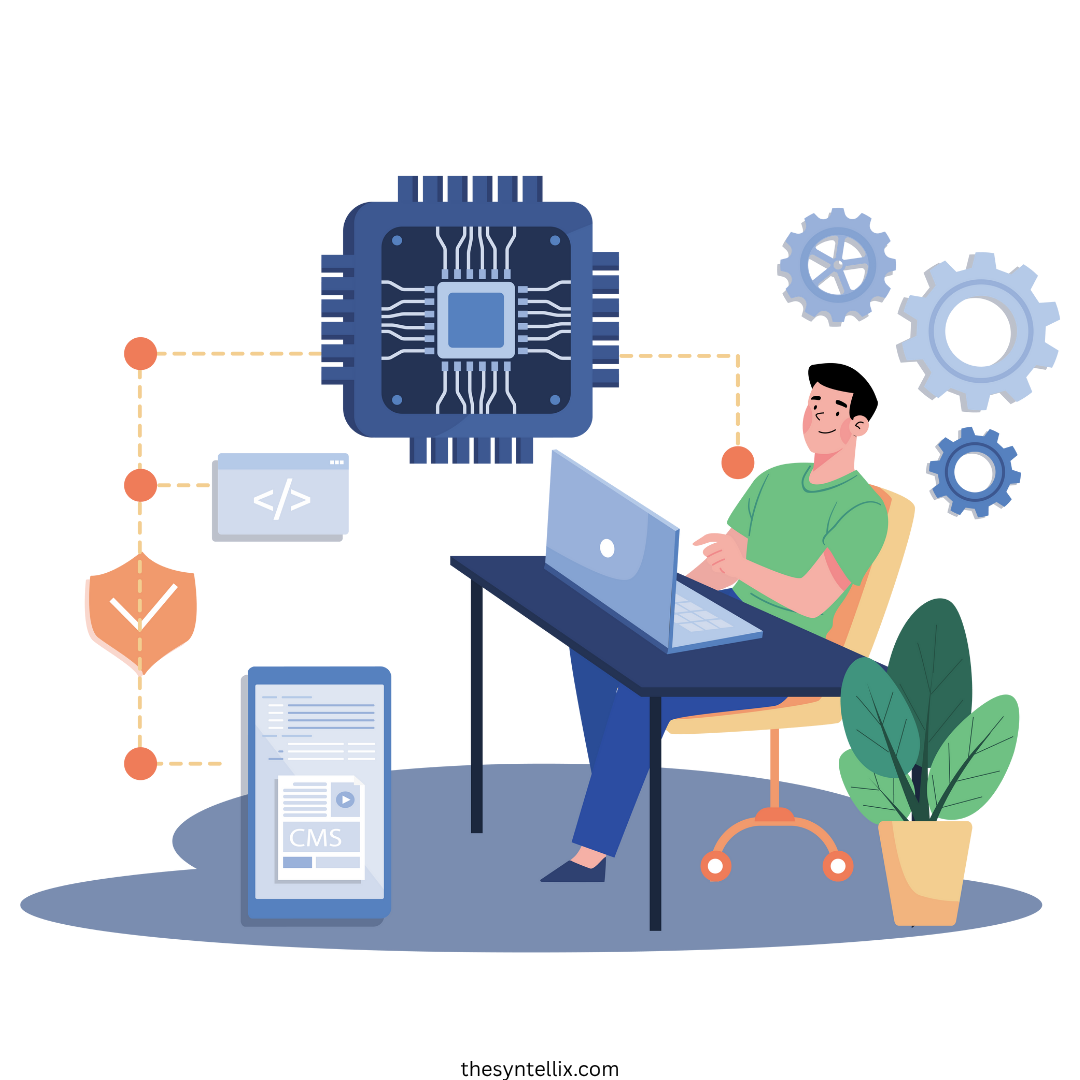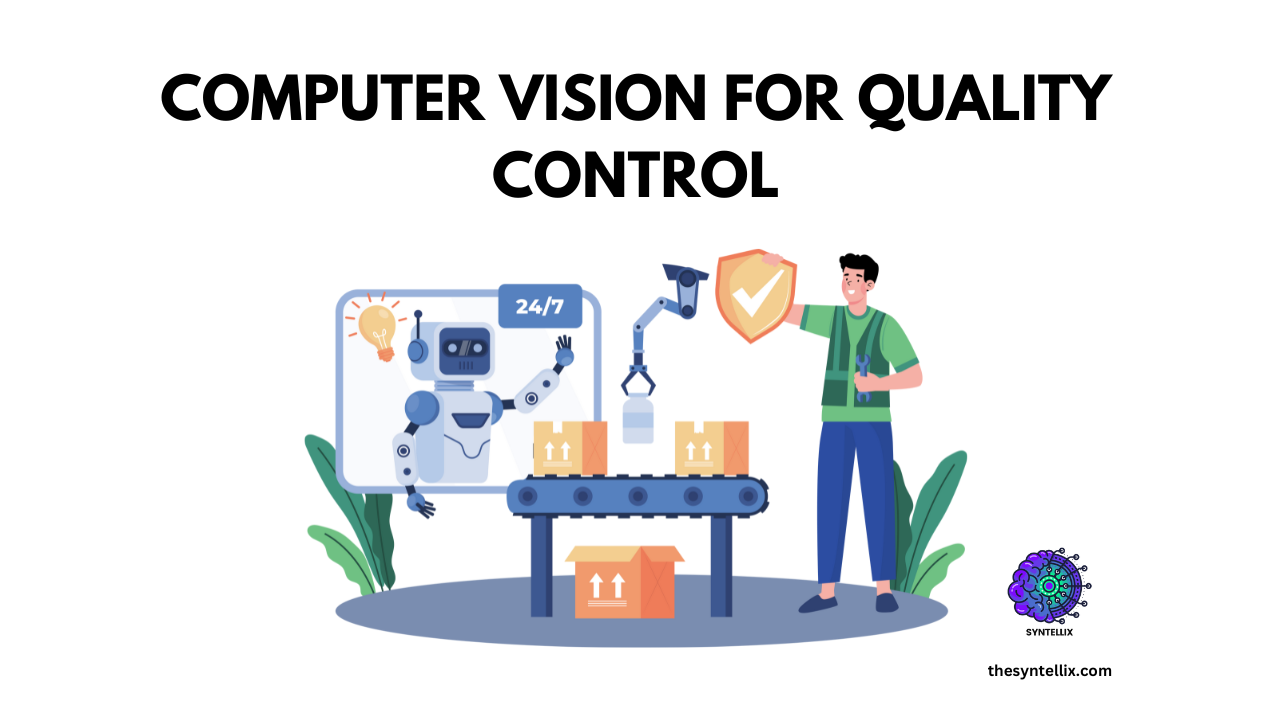Have you ever wondered how factories catch tiny product defects faster than the human eye?
Thanks to computer vision, machines can now “see” and inspect products in real time such as spotting scratches, misprints, or missing parts before they ever reach the customer. It is not just faster, it is smarter also and it is even changing the game for manufacturers worldwide.
In this post, we’ll break down how computer vision for quality control works, why it matters, and how your business can benefit from it.
What Is Computer Vision for Quality Control?
Computer vision for quality control is a technology that allows machines to “see” and inspect products during the manufacturing process. Just like our eyes can spot a scratch on a phone screen or a misprinted label on a bottle, computer vision systems can do the same—only much faster and more accurately.
At its core, computer vision uses artificial intelligence (AI) and cameras or sensors to look at visual data like images or video. It then analyzes that data to find defects, errors, or anything that doesn’t meet quality standards.
For example:
- In a factory that makes soda cans, computer vision can check if the labels are placed correctly.
- In an electronics plant, it can make sure that all parts are in place and there are no broken components.
This helps companies to:
- Catch mistakes early
- Reduce waste
- Improve product quality
- Save time and money
Computer vision is becoming a powerful tool for modern factories and production lines. It’s like giving machines a set of sharp, smart eyes that never get tired.
Benefits of Computer Vision for Quality Control You Can’t Deny
When it comes to manufacturing, every detail matters. A tiny defect can lead to product recalls, safety issues, or unhappy customers. That’s where computer vision steps in—and once you see what it can do, you won’t want to go back to manual checks.
1. Faster and More Accurate Inspections
Computer vision systems can inspect thousands of products in minutes without blinking. Unlike human inspectors who get tired or miss subtle flaws, these systems work 24/7 with consistent accuracy. They catch even the smallest defects that the human eye might miss—scratches, cracks, misalignments, or color differences. That means fewer errors and better product quality.

2. Reduced Costs and Less Waste
Manual inspections can be slow, costly, and prone to mistakes. Computer vision helps to reduce labor costs and cuts down on the number of defective products that slip through the cracks. By catching problems early, it prevents waste and rework. That’s money saved—and less material tossed out.
3. Real-Time Monitoring and Smarter Decisions
With computer vision, you get real-time insights right from your production line. If something goes wrong—like a faulty batch or machine misalignment—you’ll know immediately. This allows your team to act fast, fix the issue, and avoid costly downtime. Over time, the data collected by the system can help you to improve your processes and make better decisions.
4. Scalability and Flexibility
Whether you’re producing hundreds or millions of items, computer vision scales with you. It adapts to different shapes, sizes, and product types without needing a full rework of your inspection process. You can also update the system easily if your quality standards or production needs change.
5. Improved Safety and Compliance
Some industries, like automotive, aerospace, and food, have strict safety and quality standards. Computer vision helps you to meet those requirements by ensuring every product is inspected with the same level of care. That keeps your customers safe—and your business compliant with industry regulations.
Keep it in mind that computer vision is not just a technological upgrade it is a game-changer for quality control. It makes inspections faster, smarter, and more reliable while helping you to save time, money, and resources. If you want to stay competitive and deliver top-notch products, computer vision is a tool you simply can’t ignore.
Computer Vision for Quality Control: Real-World Use Cases
Computer vision is a powerful tool that is helping the businesses to improve quality, reduce waste, and stay competitive. By giving machines the ability to “see” and make decisions based on visual input, companies can detect issues faster and more accurately than ever before. Let’s explore some real-world ways it’s transforming quality control.
1. Product Manufacturing: Spotting Flaws Early
In manufacturing, even a tiny defect can lead to a big problem down the line. Computer vision systems can inspect products on the assembly line in real time—24/7, without getting tired.
Whether it’s checking for cracks in smartphone screens, incorrect stitching on shoes, or missing screws in machinery, these systems catch errors that human eyes might miss. This means better quality from the start, fewer returns, and a stronger reputation for your brand.

2. Quality Sorting: Smart and Fast
Imagine sorting thousands of products by size, shape, or color—manually, it would take forever and still not be 100% accurate. With computer vision, machines can instantly analyze items and sort them with precision.
For example, in the food industry, vision systems can separate ripe from unripe fruit, or detect damaged vegetables before they reach the customer. In electronics, they help to ensure only perfectly assembled components make it into final packaging.
3. Defect Reduction: Learning from Mistakes
One of the biggest advantages of computer vision is that it doesn’t just spot defects—it can also help to prevent them. By collecting visual data over time, manufacturers can identify patterns and see exactly when and where problems happen.
Maybe a certain machine causes more errors in the afternoon, or a supplier’s parts often arrive with defects. With that insight, you can make smarter decisions, fix weak spots in the process, and keep defects from happening in the first place.
4. Packaging Inspection: The Last Line of Defense
Another exciting use case is in packaging. Before a product leaves the factory, it needs to look right and be labeled correctly. Computer vision can double-check barcodes, expiration dates, packaging alignment, and sealing. This is crucial in industries like pharmaceuticals and food, where even a small mistake can be costly—or dangerous.
These use cases show just how versatile and valuable computer vision is for quality control. It helps companies to deliver better products, reduce waste, and operate more efficiently. As the technology continues to improve, it’s becoming more accessible—even for smaller businesses. The result? Higher standards, happier customers, and a serious edge over the competition.
Conclusion:
Computer vision is changing how businesses handle quality control—making inspections faster, more accurate, and far less reliant on human error. Instead of relying only on the human eye, companies can now use AI-powered cameras and algorithms to spot defects instantly, 24/7.
By adopting computer vision, you’re not just improving product quality—you’re saving your time, reducing waste, and gaining a competitive edge. Whether you run a factory, a warehouse, or a supply chain, investing in this technology today means fewer problems tomorrow.
The tools are ready. The benefits are clear. The next step is yours. Will your business see the future—or fall behind it!
How do you find this blogpost? Please share you thoughts in comments. If you have any suggestions regarding Computer vision for quality control, or you have any questions please contact us.
People Also Ask
In which industry can computer vision be used for quality control?
Computer vision is used in a wide range of industries for quality control. These include manufacturing, automotive, electronics, pharmaceuticals, food and beverage, textiles, and even semiconductor production. For example, in automotive manufacturing, it helps detect defects in paint jobs or part alignments. In food processing, it checks packaging integrity or sorts produce by quality. Anywhere visual inspection is needed, computer vision can improve accuracy, speed, and consistency.
How are computers used in quality control?
Computers play a central role in modern quality control through automated inspection systems. Using cameras, sensors, and AI-powered software, they capture images or data from production lines and analyze them in real-time. Computer vision algorithms detect defects, measure dimensions, check color consistency, read barcodes or labels, and ensure product compliance. This automation reduces human error, speeds up inspection, and helps maintain high standards of quality in mass production.
What are the 4 types of quality control?
The four main types of quality control are:
-
Process Control – Monitoring production processes to ensure consistency and efficiency.
-
Acceptance Sampling – Inspecting a sample batch rather than every single item.
-
Control Charts – Using statistical tools to track variation over time.
-
Product Inspection – Checking the final product for defects or deviations from standards.
Computer vision is mostly used in product inspection and process control, where it provides instant, objective assessments.
What are the 3 R's of computer vision?
The 3 R’s of computer vision typically refer to:
-
Recognition – Identifying objects, patterns, or features within images (e.g., detecting a scratch on a car panel).
-
Reconstruction – Creating 3D models or understanding depth and shape from 2D images (used in robotics or advanced inspection).
-
Registration – Aligning images from different sensors or over time to track changes or movement (useful in medical imaging and video analytics).
These capabilities are key to applying computer vision effectively in real-world quality control systems.

Stay ahead of the curve with the latest insights, tips, and trends in AI, technology, and innovation.

